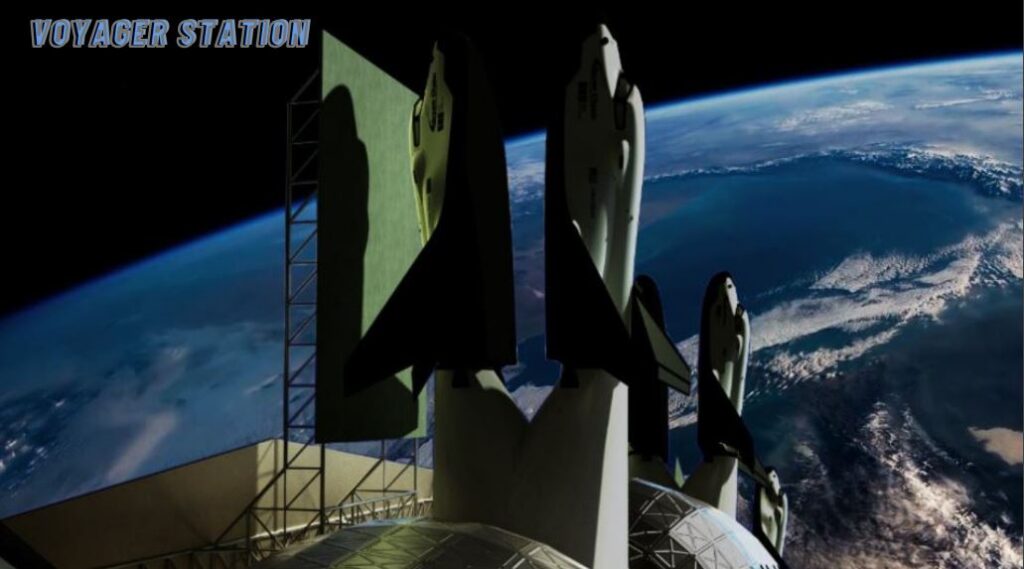Voyager: Vacationing in a space hotel is no longer a distant dream. At least for the very rich of this world…
Space tourism is now the new hobby of Earth’s billionaires. Both Jeff Bezos and Richard Branson recently took a walk-in space, trying to persuade others to do the same.
Somehow, this enthusiasm for space exploration prompted several companies to design space hotels of the future. We expect the first one to be operational in about six years. It is a $200 billion project that will provide all the comforts of a five-star hotel on Earth.
Plans to build the Voyager Space Station were first announced in 2019 by the California-based Orbital Assembly Corporation. The original plan was to launch the space station by 2025. However, the pandemic changed the company’s plans. The space hotel will have the shape of a roller coaster and will consist of two rings connected by spokes. In the outer ring, there will be rooms, bars, restaurants and gyms.
Voyager – Construction and Energy Technology
The space station will have a total area of 50,000 square meters and its construction is expected to begin in 2026. The Voyager will be in orbit very close to Earth, which also serves to reduce costs. It will run on solar energy and will rotate at high speeds to provide artificial gravity to guests for a comfortable stay. Once completed it will be able to accommodate 280 guests and 112 crew members. Although the price of the simple hotel rooms and suites has not been precisely determined, it seems that for three nights (the shortest stay), a visitor will have to spend about $5,000,000 according to Travel and Leisure.
Surely, then, those who will be able to experience this unprecedented experience will be only the Croesus of this world.
Orbital Assembly Corporation

Orbital Assembly Corporation (OAC) is a leader in the race to make space available to everyone by building the Voyager-class of Space Stations – a gravity simulating on-orbit habitation environments for leisure, commercial and industrial activities.
Voyager – A combination of different technologies from OAC
Gravity Ring is slated to become OAC’s first commercial product, which is designed to host payloads from various commercial interests and research institutions. Gravity Ring has the opportunity to pave the way for larger and more capable spacecraft utilizing artificial gravity, such as the Voyager-class™ Space Stations. Many industry partners are already engaged to be part in this historic project, which will address questions about the effects of partial gravity on both living and non-living systems.
Pioneer-class Station, projected to be completed by 2025, feeds forward from Gravity Ring, with the capability to accommodate up to 56 passengers and crew on four to eight habitation modules. This microgravity space station, intended to be used for commercial operations, is designed for intermittent artificial gravity operation, providing the opportunity for long-term habitation. The Pioneer-class Station is designed to generate revenue in the following areas: tourism, manufacturing, research, leasing and hosted payloads. OAC anticipates the station will be cash flow positive in its first year of operation, and that its revenue will significantly reduce debt by 2026 so that OAC will be in a good position to fund future construction with minimal equity or debt financing.
DSTAR (Demonstration Structural Truss Assembly Robot™) is an autonomous truss building system machine that assembles large-scale structures (100+ m). The design and structural fabrication of the DSTAR was funded 100% by the company founders. OAC successfully demonstrated the system at our Fontana, California, facility by constructing a six-ton structure the length of a football field in just 24 record-breaking minutes. We anticipate the STAR system will amortize its development and operation costs over time as demand builds for its ability to produce superstructure elements for a variety of private industry applications.
Voyager-class Space Stations are OAC’s flagship product, expected to be ready in 2027. It will be able to accommodate more than 300 passengers and crew, including tourists, business travelers, astronauts, scientists, and other groups interested in working and living in space. Also, it will offer continuous, near lunar operational artificial gravity, which is similar to the gravitational pull of the moon, as well as microgravity and near-continuous sunlight, which will provide ample electrical power.


